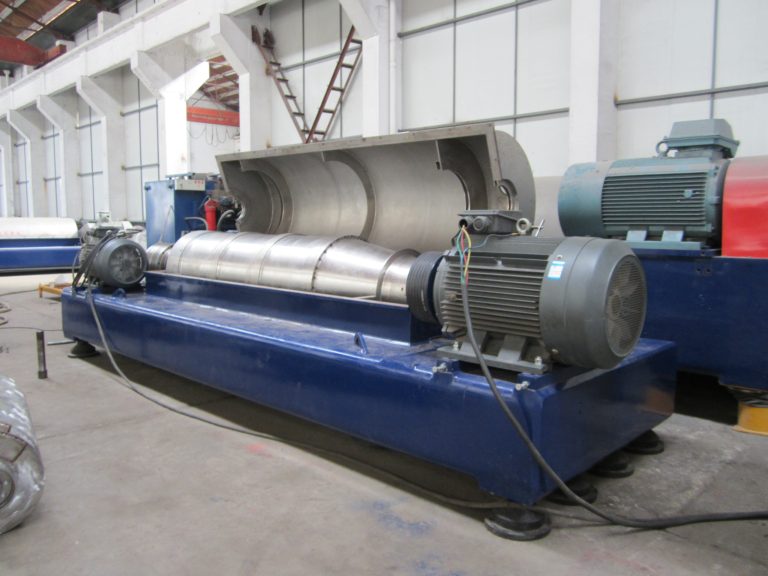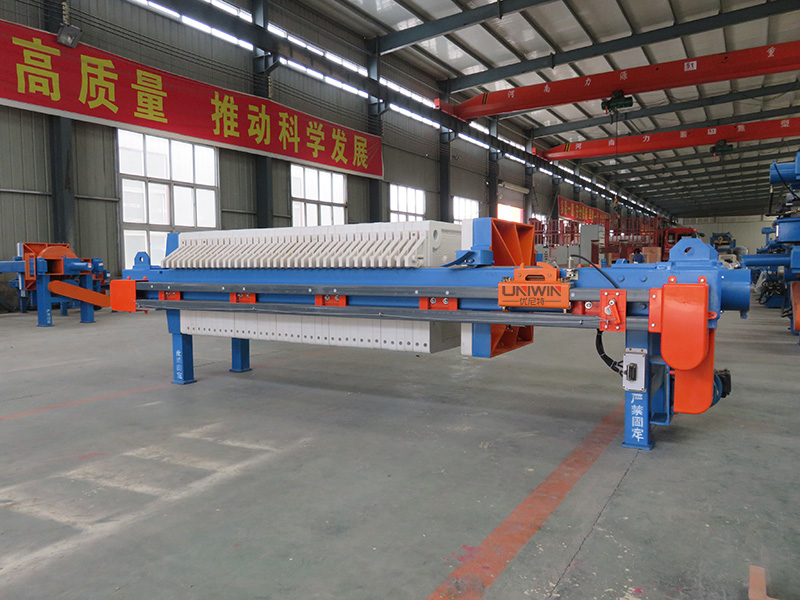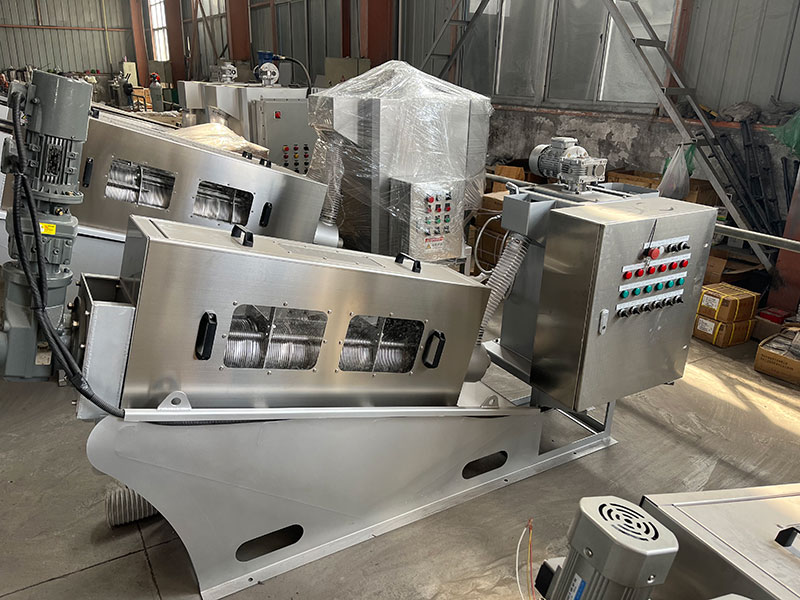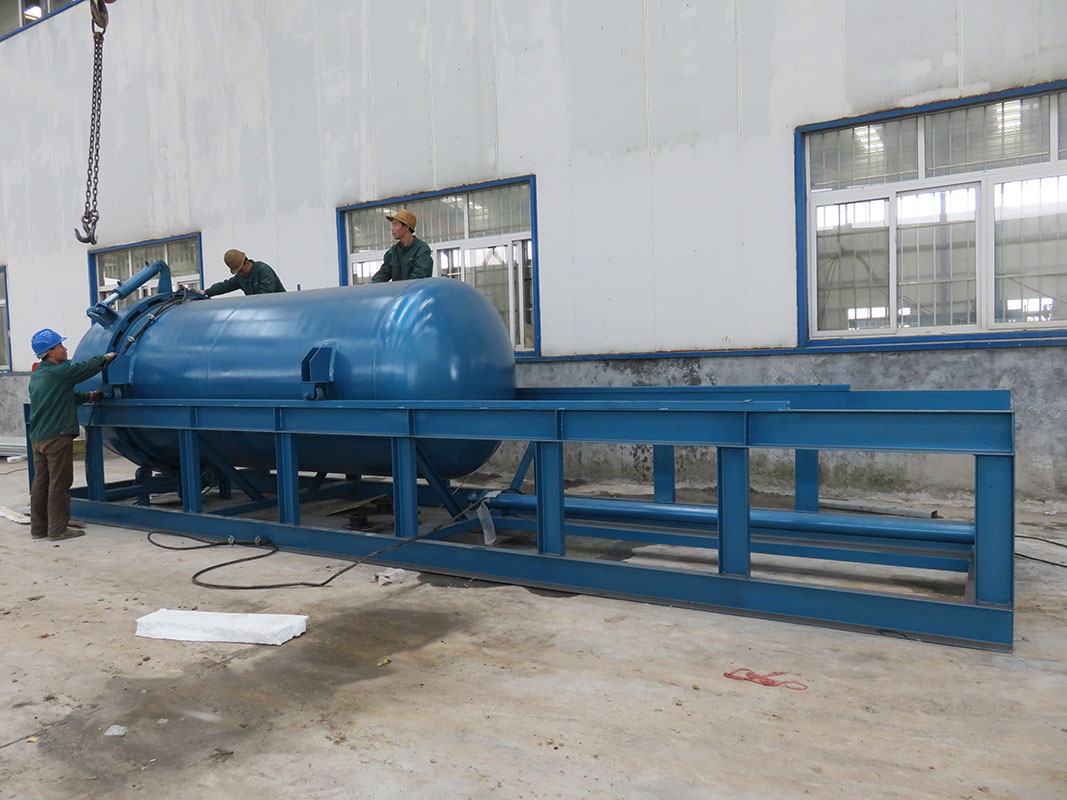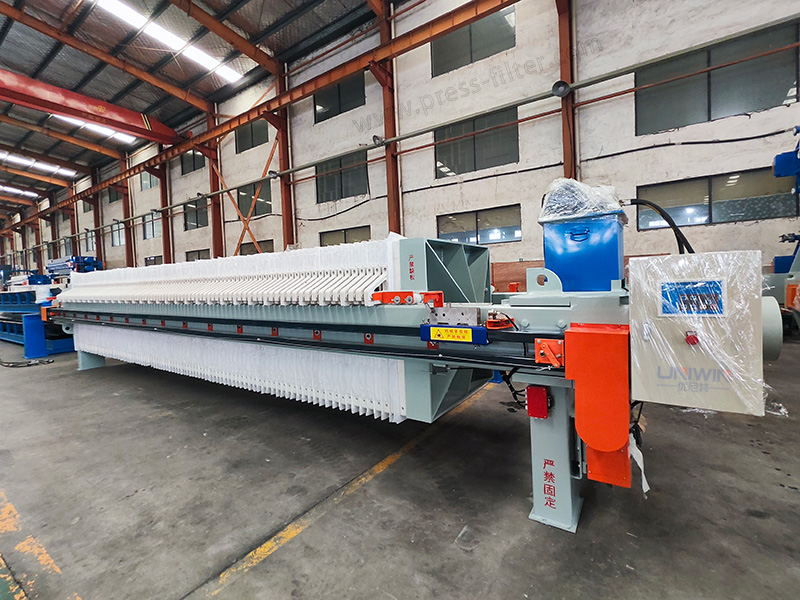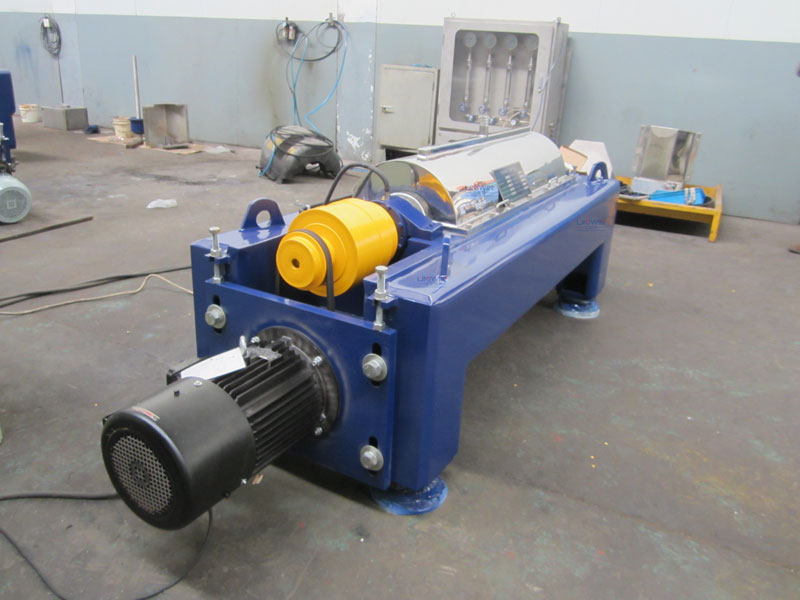
What is a decanter centrifuge?
Decanter centrifuge is an efficient solid-liquid separation equipment, mainly used for solid-liquid separation of various granular and sandy materials. There are generally two types decanter centrifuges they are horizontal spiral filter centrifuges and horizontal spiral sedimentation centrifuges. Decanter centrifuging machine has the characteristics of fully enclosed operation, clean and pollution-free site and cleaning water consumption, low operating cost, compact equipment layout and small footprint.
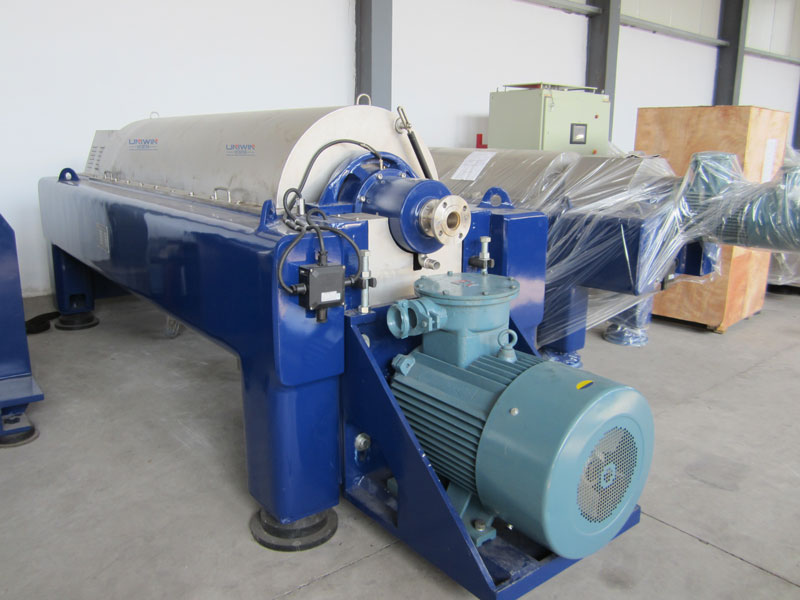
What is the principle of decanter centrifuge?
The decanter centrifuge relies on the density difference between solid and liquid phases to accelerate the settling speed of solid particles under the action of centrifugal force to achieve solid-liquid separation.
The main components of the decanter centrifuges are the rotating drum and a spiral unloader. During the operation of the decanter centrifuge, the high-speed rotating drum causes the materials inside to be subjected to strong centrifugal force, which is far beyond the scope of gravity. When the material rotates in the drum, solid-liquid separation begins: the solid part adheres tightly to the inner surface of the drum due to the influence of centrifugal force, while the liquid remains in the center. Subsequently, the spiral unloader rotates at a relatively low speed, and its main function is to gradually push the solids separated by centrifugation and attached inside the rotating drum to the discharge port of the centrifuge. The difference in speed between the rotating drum and the spiral is ensured by the characteristics and settings of the differential.
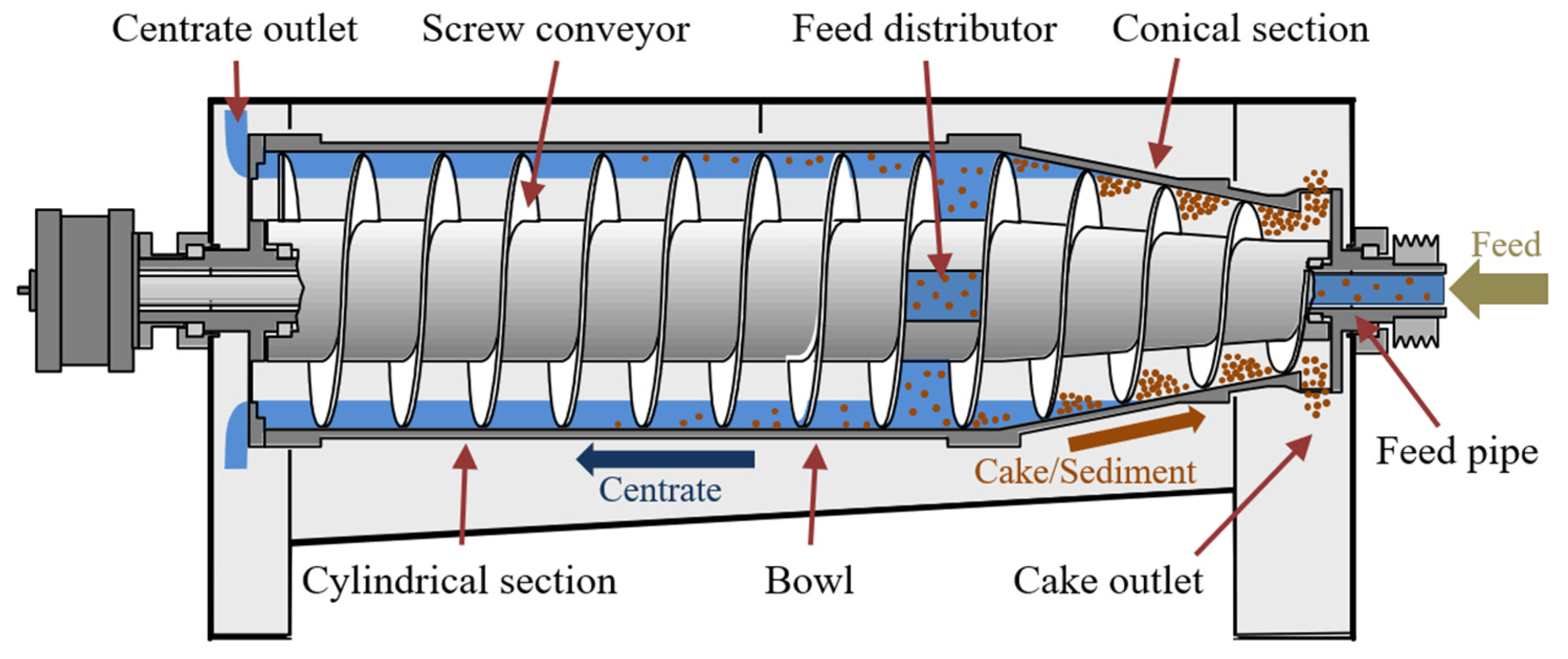
What is the working process of decanter centrifuge?
The characteristic of decanter centrifuge is that its drum and screw rotate rapidly in the same direction at a certain differential speed. Materials continuously enter through the feed pipe and are accelerated in the inner barrel of the spiral, and then are sent to the rotating drum. Affected by centrifugal force, heavy solid parts will adhere to the drum wall to form a sediment layer. The spiral structure continuously pushes these sediments to the tapered end of the drum and is discharged out of the machine through the slag discharge port. The light liquid part forms a liquid ring inside, overflows from the large end of the drum, and is continuously discharged through the drain port.
What is decanter centrifuges used for?
Decanter centrifuge: solid-liquid separation based on centrifugal force. When the drum rotates at high speed, solid particles are deposited on the walls of the drum due to centrifugal force, while the liquid is located in the center or flows out of the equipment.
Filter press: solid-liquid separation based on pressure difference. The liquid passes through the filter cloth or other filter material, and the solid remains on the filter cloth.
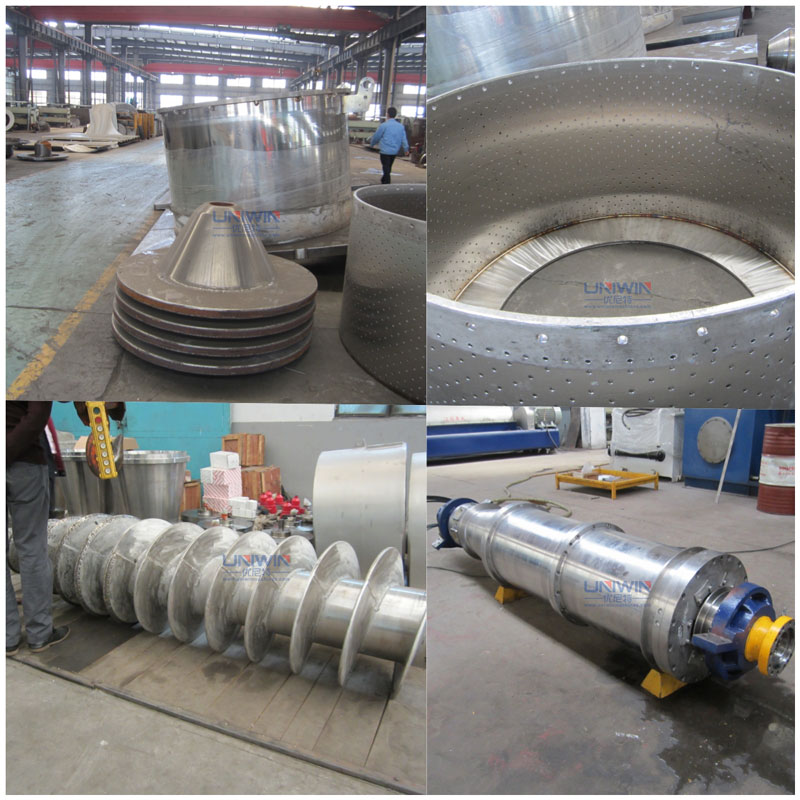
Material characteristics of decanter centrifuge suspension.
In the material that decanter centrifuges to be filtered, larger solid particles are easier to separate. When particle sizes are inconsistent, small solid phase particles will determine the overall separation efficiency. Decanter centrifuging machine is usually capable of separating solid particles of 5um and above. But when the solid particles are particularly fine, they will not precipitate but will be discharged together with the clarified liquid. The overall separation performance is affected by the number of solid particles larger than 5um in the material; the greater the number, the better the effect, and vice versa.
Crystalline and fibrous solid phases are easier to separate. The flocculent and pasty solid phases are more difficult to separate, this is because their greater solubility makes it easy to slip during the screw-propelled sediment process, which in turn affects the effect. Therefore, when dealing with flocculent and pasty solid phases, the flow rate should not be too large.
The greater the difference in weight between the solid and liquid phases, the better the separation; smaller differences result in less effectiveness.
The lower the viscosity of the liquid phase, the easier the separation. A high viscosity liquid phase may result in more solid phase in the clarified liquid, reducing the separation efficiency. In this case, the viscosity can be reduced by raising the temperature of the material (but not exceeding 95°C), so as to improve the separation efficiency.
Decanter centrifuge diameter
| LW220×930 | LW350×1550 | LW400×1750 | LW450×1940 | |
Drum diameter(mm) | 220 | 350 | 400 | 450 |
| Maximum speed(r/min) | 4800 | 3700 | 3200 | 2800 |
| Drum length(mm) | 930 | 1550 | 1750 | 1940 |
| Aspect ratio | 4.2 | 4.4 | 4.4 | 4.3 |
| Separation factor | 2800 | 2600 | 2290 | 2030 |
| Production capacity(m3/h) | 0.5~3 | 1~15 | 1.5~20 | 3~30 |
| Motor Power(kw) | 11~15 | 15~18.5 | 18.5~30 | 22~30 |
| Weight(kg) | 900 | 2000 | 2600 | 3400 |
| Dimensions(mm) | 1790×1080×640 | 2790×1300×880 | 2950×1400×850 | 3300×1500×920 |
Package photoes
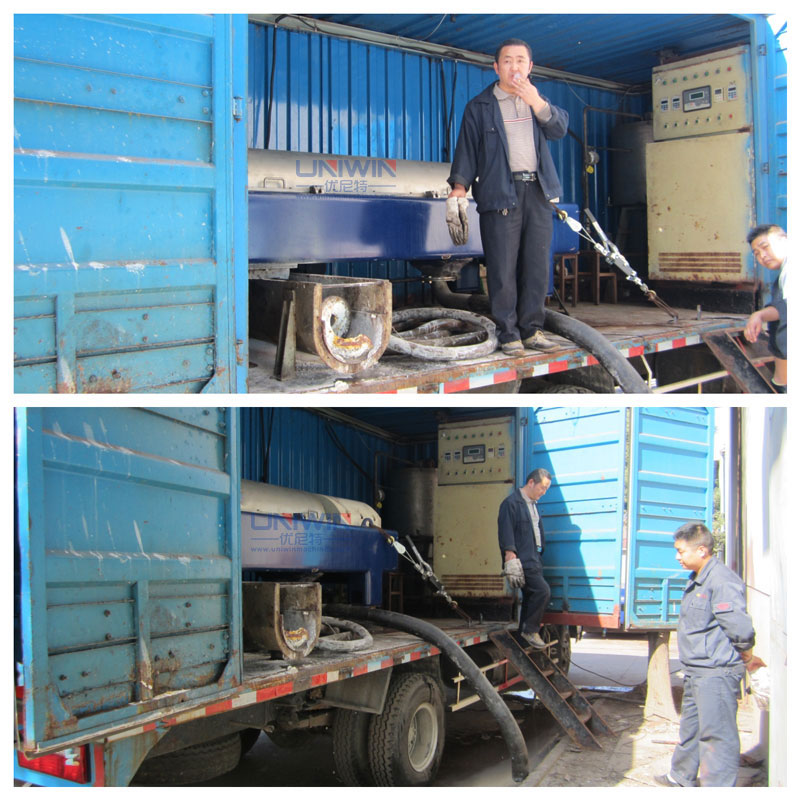
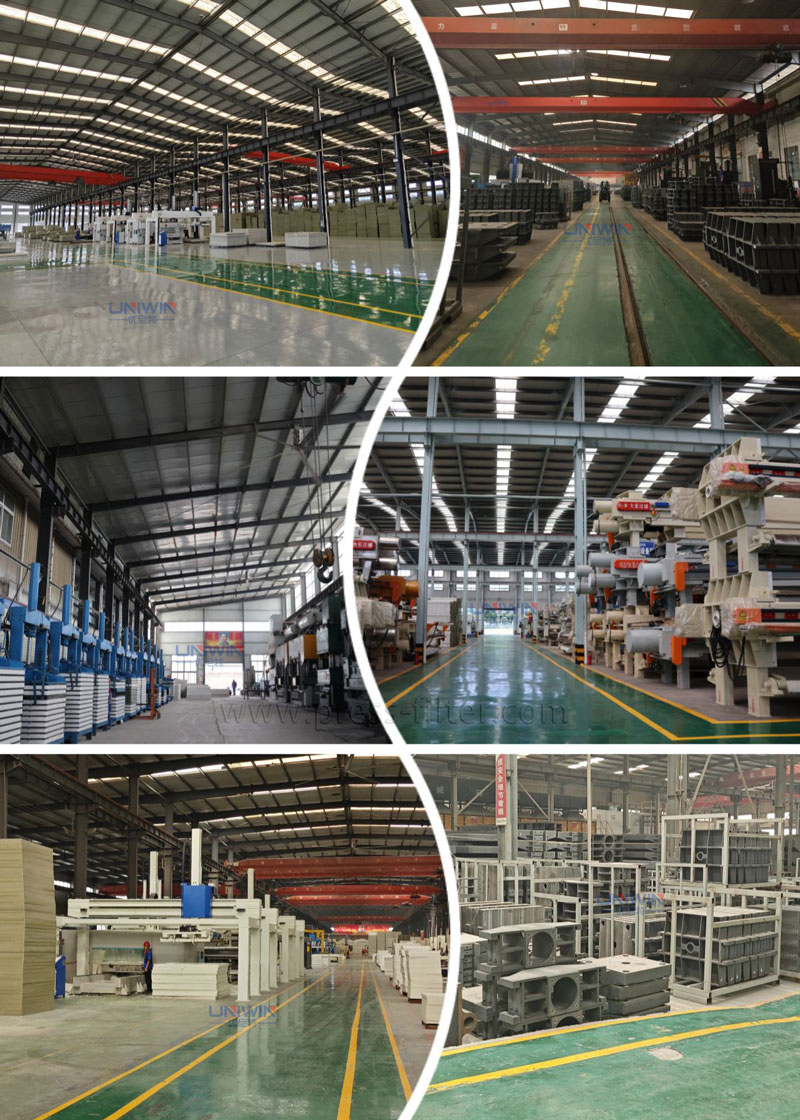
Comany Information
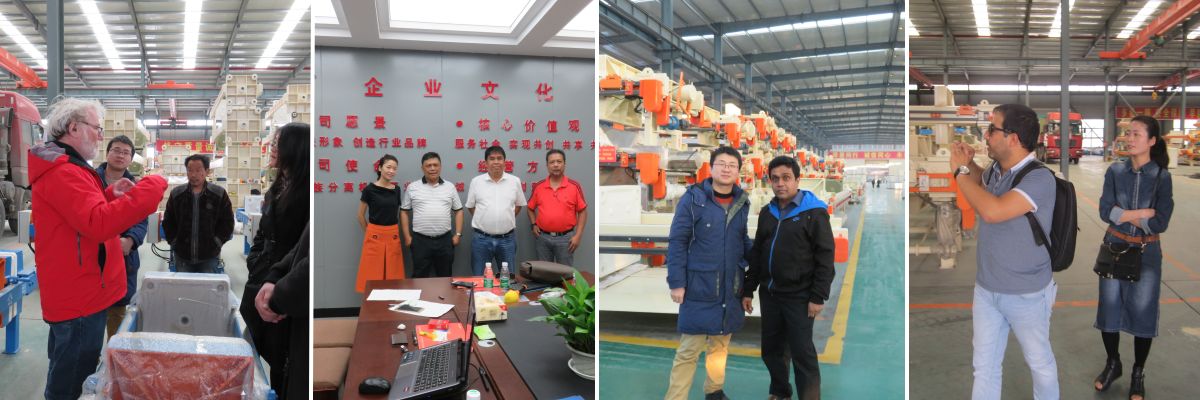
Uniwin Filtering, Filter Press Expert in China, 26 years experiences makes us your reliable partner in China. We have exported to over 50 countries in the world such as USA, Australia, Indonesia, Sri Lanka, India, Mexico…

